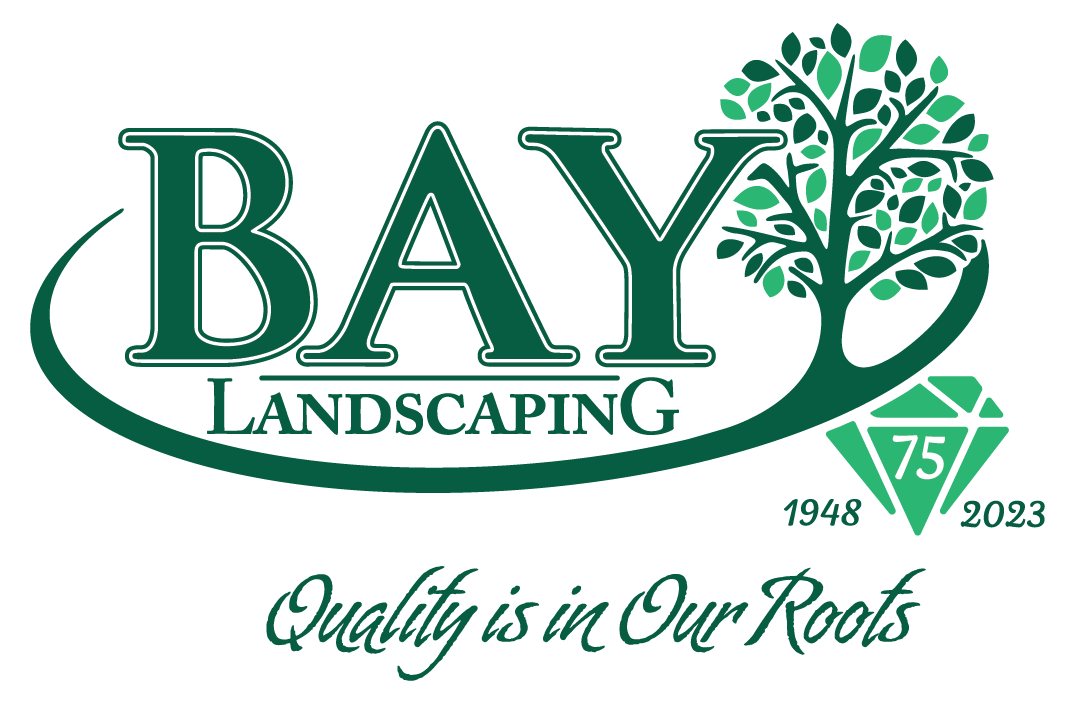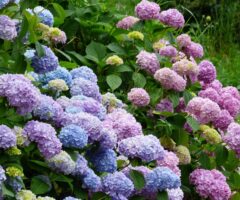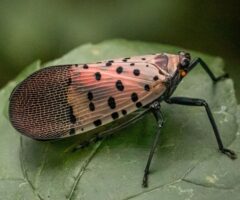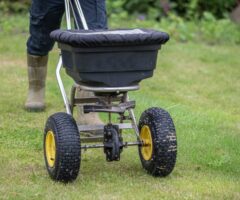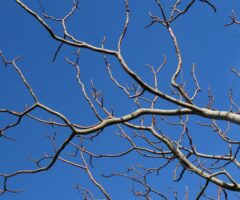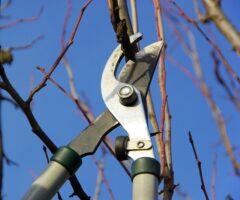If you’re looking at your thin, patchy lawn in Bay City, Midland, Saginaw, or somewhere else nearby and wondering when to tackle reseeding, you’re not alone. Many homeowners in the Great Lakes Bay Region assume spring is the logical time to start fresh with their lawns. But here’s what 70+ years of local experience has taught us: late August through mid-September is actually the perfect window for lawn seeding success in Michigan.
The combination of warm soil temperatures and cooler air creates ideal conditions for grass seed germination and establishment. Unlike spring seeding, which battles summer heat and aggressive weed competition, fall seeding gives your grass a serious advantage. Your new lawn will have months to develop strong roots before facing its first summer stress test.
Here’s what you need to know to take advantage of this optimal seeding window in the Great Lakes Bay Region.
Key Takeaways
- Mid-August through September offers the best conditions for grass seed germination in Bay City, Midland, and Saginaw areas.
- Warm soil temperatures (60-75°F) and cooler air create perfect growing conditions without summer heat stress.
- Fall seeding faces minimal weed pressure compared to spring, when crabgrass and other weeds are actively germinating.
- Slit seeding with proper equipment ensures better seed-to-soil contact than broadcast seeding methods.
- Fall-seeded grass develops strong root systems over winter and emerges thick and healthy in spring.
- Choosing grass seed suited to Great Lakes Bay Region conditions makes the difference between success and disappointment.
- Grass roots shrink in hot soil no matter how much you water or fertilize. Protect them with shade by keeping your grass tall, between 3½ to 4 inches or more.
Best Time to Seed Lawn in Michigan
Because of the temperature conditions in early fall, Mid-August through September is the ideal time for lawn seeding throughout the Great Lakes Bay Region, from Auburn to Essexville. Common seed blends containing cool-season grasses like Kentucky bluegrass, fescues, and perennial ryegrass thrive when met with the following conditions:
- Soil temperatures stay between 50-65°F
- Air temperatures range from 60-75°F
- Humidity levels support consistent moisture retention
- Day length decreases, reducing water evaporation
In Bay City and surrounding areas, September typically brings more consistent rainfall patterns. This natural moisture helps maintain the consistently damp conditions new seeds require without the intensive daily watering schedules you’d face during hot summer months.
While you might be able to seed into early October if weather remains favorable, starting in September gives your grass the best chance to establish strong roots before winter dormancy. Waiting too long becomes risky because unpredictable October weather could prevent proper establishment.
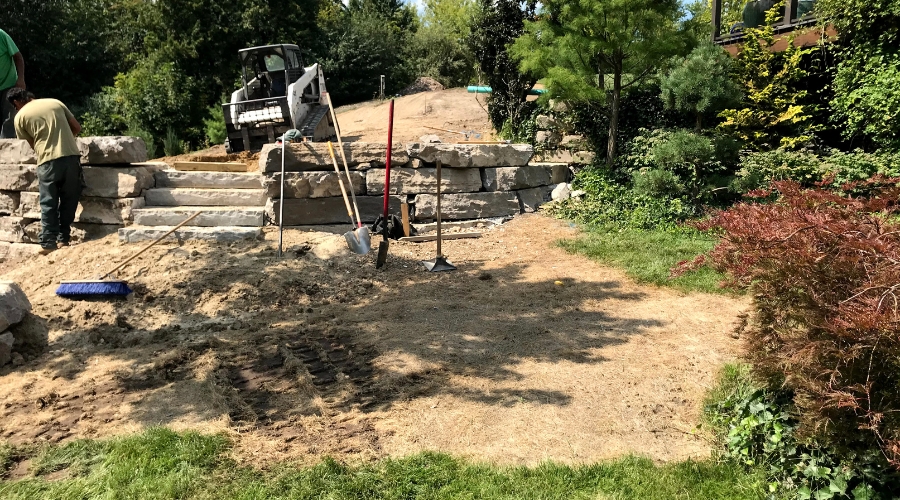
How to Tell if Your Lawn Needs Fall Seeding
Not every thin lawn needs a complete overseeding. Sometimes a good fertilizer application and favorable fall conditions help existing grass recover and spread into bare spots naturally. But when damage runs deeper, it’s worth looking at what your lawn went through the previous season to understand why new seed may be the best solution.
Why Great Lakes Bay Region Lawns Struggled This Summer
Many lawns in Hampton Township, Monitor Township, and Portsmouth Township took a beating during the 2025 growing season. Michigan experienced drought conditions in the Saginaw Valley area through spring and summer, with approximately 6% of the state under drought conditions and 13% abnormally dry by August. These extended dry periods, combined with typical summer heat stress, left many lawns thin and vulnerable to weed invasion.
Clear Signs Your Lawn Needs Professional Attention
The recommended action threshold occurs when weeds make up 40% or more of your lawn area, or when you have large dead patches that won’t recover on their own. Look for these specific indicators that fall seeding will help:
- Multiple bare areas larger than a dinner plate
- Grass density so thin you can easily see soil between blades
- More than 40% weed coverage (crabgrass, dandelions, clover)
- Areas that didn’t recover after adequate watering and fertilizing
- Compacted soil areas where grass struggles to grow
- Persistent brown patches that remained after drought stress ended
For smaller bare spots about the size of baseballs, a targeted fertilizer application might be all you need to encourage your existing grass to fill in naturally during fall’s favorable growing conditions.
Professional Slit Seeding vs DIY Lawn Seeding Methods
The method you choose for seeding makes a huge difference in your results. Understanding the pros and cons of each approach helps you make the right decision for your lawn.
DIY Broadcasting Method
- How it Works: Hand spreading or drop spreader application over existing grass.
- Main Problem: Seeds often don’t make proper contact with soil.
- Results: Lower germination rates (if any) and patchy establishment.
- Best for: Small touch-up areas or budget-conscious homeowners.
Pro Tip: While professional seeding methods yield the best and most noticeable results, doing it yourself can work as long as you prepare the area properly. Loosen bare spots with a rake or cover spread seeds with a thin layer of soil to improve seed-to-soil contact and a better chance of higher germination success.
Slit Seeding Method
- Equipment Advantage: Specialized machines slice grooves directly into turf.
- Seed Placement: Seeds deposited directly in soil grooves for maximum contact.
- Coverage Protection: Seeds covered with thin soil layer.
- Moisture Retention: Better seed-to-soil contact maintains consistent moisture.
- Success Rates: Dramatically higher germination compared to surface broadcasting, and with no soil preparation required.
Application Techniques
- Seeding Rate: 3-5 pounds per 1,000 square feet using slit seeding equipment.
- Pattern Method: Two perpendicular passes at half rate each for even coverage.
- Depth Consistency: Professional equipment maintains proper seed depth automatically.
- Uniform Results: Consistent spacing creates dense, even lawn establishment.
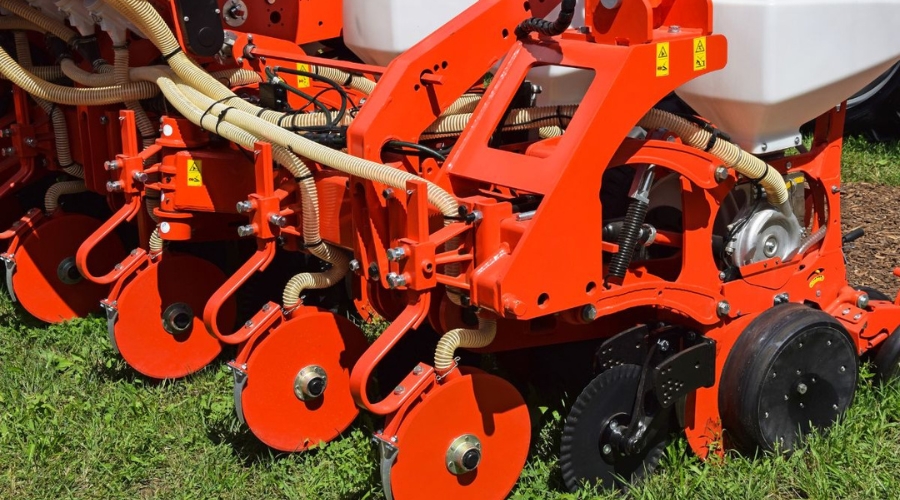
Professional slit seeding equipment slices grooves into existing turf and creates the precise seed-to-soil contact needed for successful fall lawn germination.
Best Grass Seed Types for Bay City Michigan Lawns
Choosing the right grass seed for your specific conditions makes the difference between a thriving lawn and ongoing frustration. Based on our decades of experience in the Great Lakes Bay Region, we’ve developed three specialized seed blends:
- Bay Mix: Creates a lush, supple lawn perfect for homeowners who want that premium look and feel. This blend works well in full sun to light shade conditions typical in many Saginaw and Bay City neighborhoods.
- Bay Shady: Handles shadier areas better than our other blends, though it’s not designed for deep shade conditions; no grass seed is truly suited for areas with little to no sunlight. But, if you have areas under trees or alongside buildings that receive 4-6 hours of filtered sunlight, the Bay Shady mix should establish better than traditional sun blends.
All our blends also incorporate species diversity with Kentucky bluegrass, fescues, and perennial ryegrasses. This diversity improves disease resistance and helps your lawn adapt to varying light and soil conditions throughout your property.
Fall Lawn Seeding Care Instructions in Michigan
Proper care immediately after seeding determines whether your investment pays off with a thick, healthy lawn. The first few weeks are critical for establishment, and the care requirements differ from maintaining an established lawn.
Watering Schedule for New Grass Seed
- Week 1-2: Water frequently but lightly, often 1-3 times daily with the goal of keeping soil surface consistently damp without creating puddles.
- Week 3-4: As grass begins filling in, gradually reduce watering frequency.
- Check Soil Moisture: Soil should feel damp 1/4 inch below surface.
Fertilizer Application Timeline
- At Seeding: Apply phosphors fertilizer to help with root development.
- Best Choice: Use our 16-25-12 blend, available at our nursery location.
- Why it Works: Higher phosphorus content supports critical root development.
- Slow-Release Preferred: Provides consistent nutrition without burning seedlings.
Chemical Application Restrictions
- No Herbicides: Avoid broadleaf weed killers for at least 2 months after seeding.
- Why Wait: These products prevent grass seed germination and damage young plants. Instead, rely on regular mowing to suppress weeds and encourage new grass to spread.
- Fall Timing Benefit: Dense grass growth naturally crowds out many weeds.
- Spring Treatment: Plan weed control applications for following growing season.
Mowing Guidelines for New Grass
- First Mowing: When grass reaches 3 inches in height (typically 3-6 weeks).
- Blade Condition: Keep mower blades sharp to avoid tattering blades of young plants.
- Height Rule: Never remove more than 1/3 of blade length in single cutting.
- Timing Flexibility: Mow based on grass height, not calendar schedule.
Frequently Asked Questions About the Best Time to Seed a Lawn in Michigan
Can I still seed my lawn if we get an early frost in October?
Light frost won’t hurt grass seed germination, but hard freezes can damage tender seedlings. For best results, aim to seed in September so the grass has 4-6 weeks to establish roots before typical October frosts.
What should I do if my grass seed doesn’t germinate after 3 weeks?
Poor germination usually results from insufficient moisture, seed planted too deep, or unfavorable temperatures. Check soil moisture daily – it should feel consistently damp 1/4 inch below surface. If conditions were right but germination is poor, the seed quality might be the issue. Quality seed from established suppliers, like Bay Landscaping, typically shows germination within 10-21 days under proper conditions.
Is fall seeding better than slice seeding in spring for thick lawns?
Fall seeding consistently produces better results than spring seeding in Michigan. Spring-seeded grass faces summer heat stress just as it’s trying to establish, while fall-seeded grass develops strong roots over winter and emerges ready for a great spring growing season prior to harsh summer conditions. Fall seeding also faces less weed competition and benefits from natural fall moisture patterns.

Transform Your Lawn This Fall with Help from Bay Landscaping
Don’t let another year pass watching your neighbors enjoy thick, healthy lawns while yours struggles. When homeowners ask about the best time to seed lawn in Michigan, the answer is consistently late August through September for the most reliable results in the Great Lakes Bay Region.
Bay Landscaping has helped homeowners throughout Bay City, Midland, Saginaw, and surrounding communities achieve beautiful lawns since 1948. Our professional overseeding services use proper equipment and locally-adapted grass seed varieties for results you can count on. We also stock grass seed and fertilizer for homeowners who prefer the DIY approach.
Ready to give your lawn the fresh start it needs? Call 989-893-0000 or request an estimate online to discuss your specific needs and create a plan for fall success.
